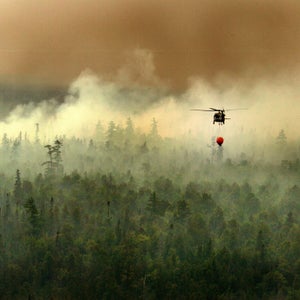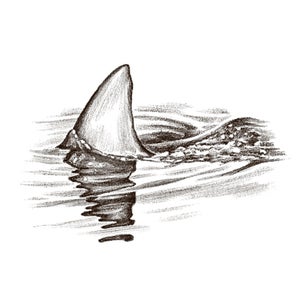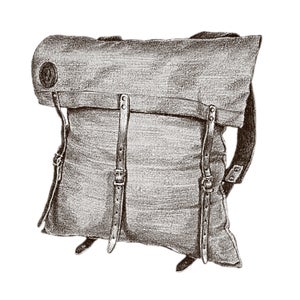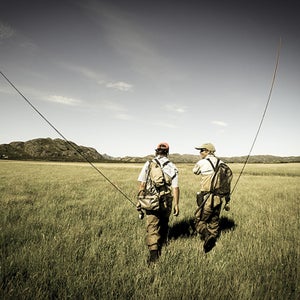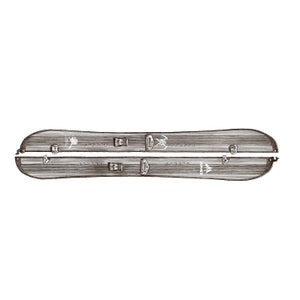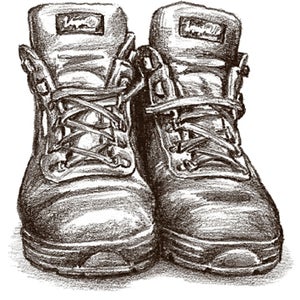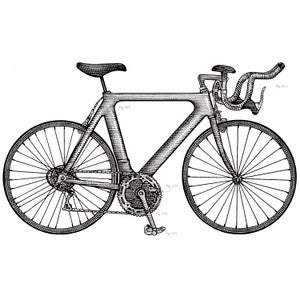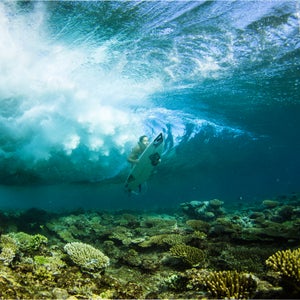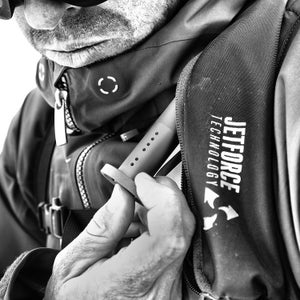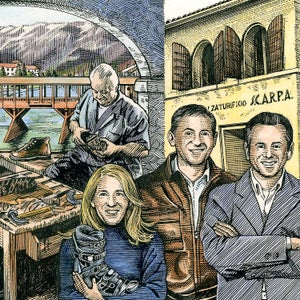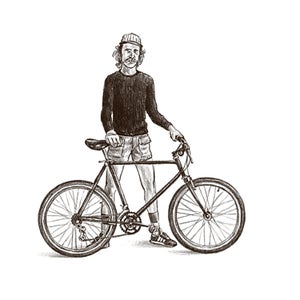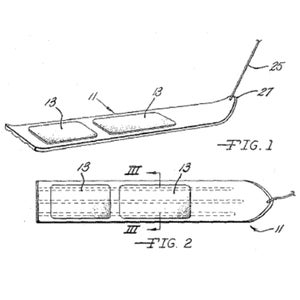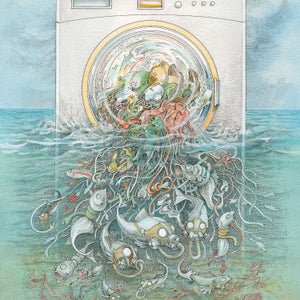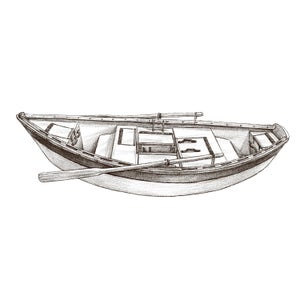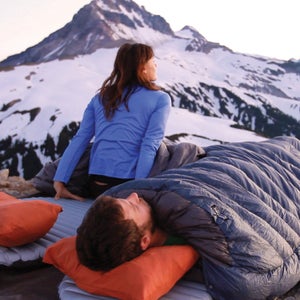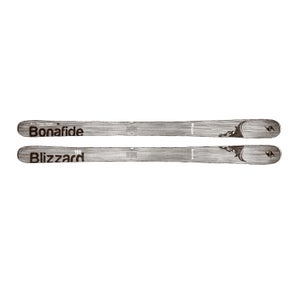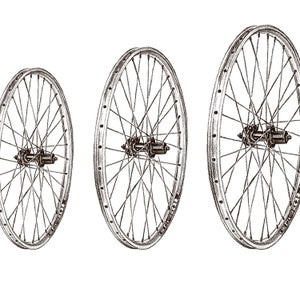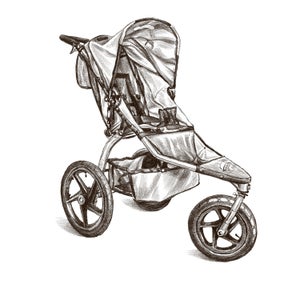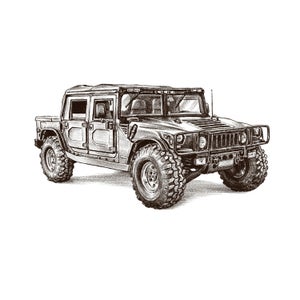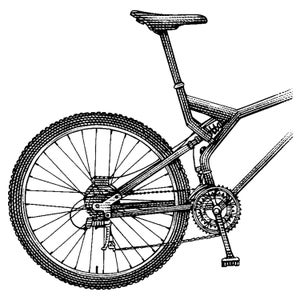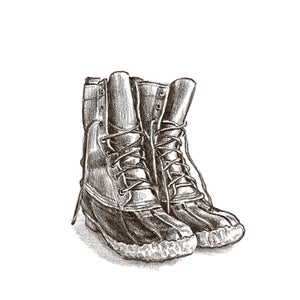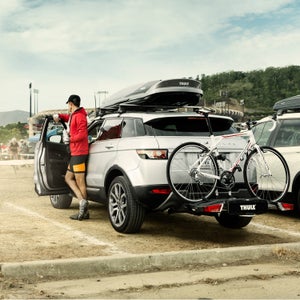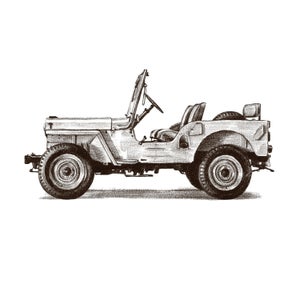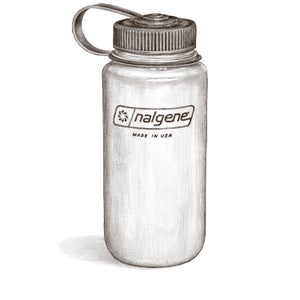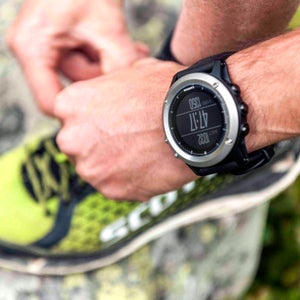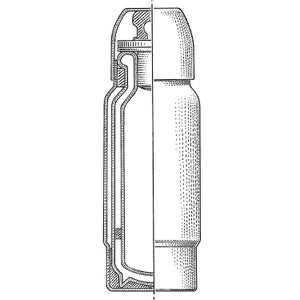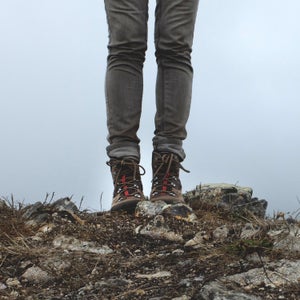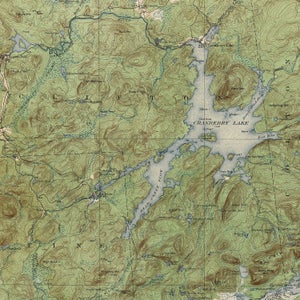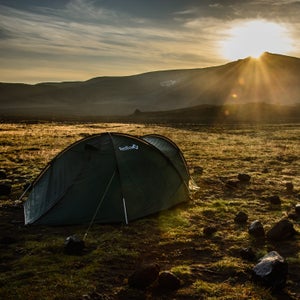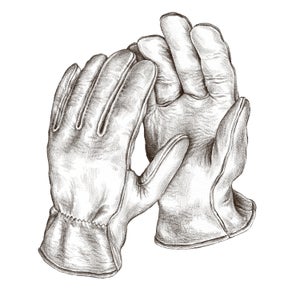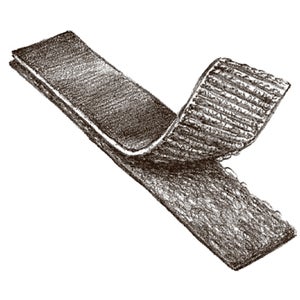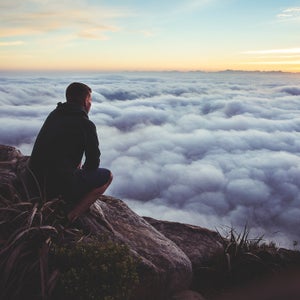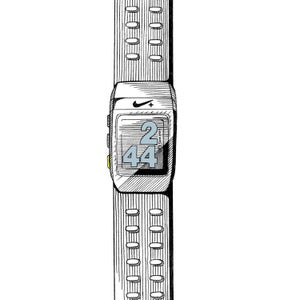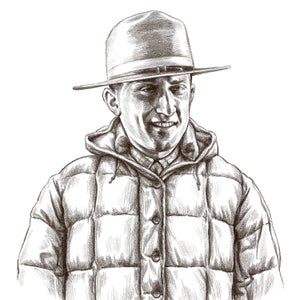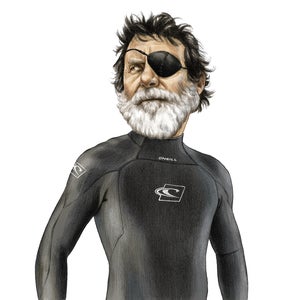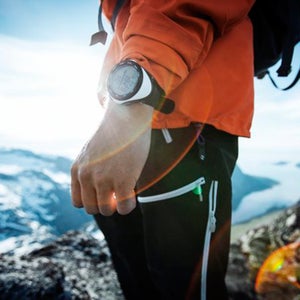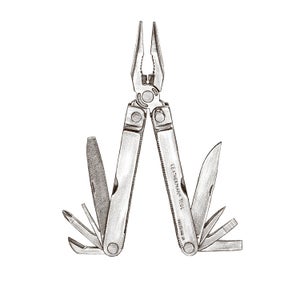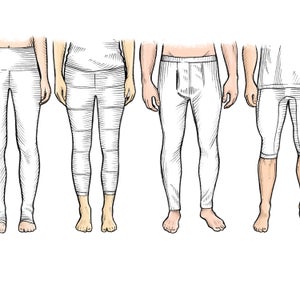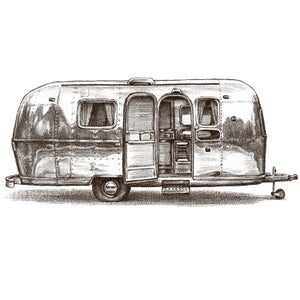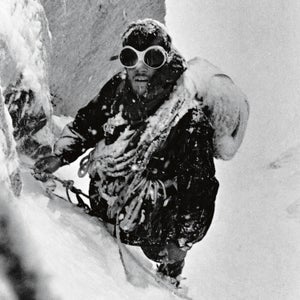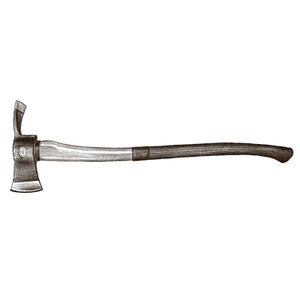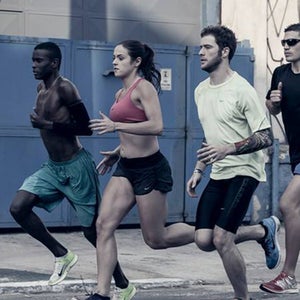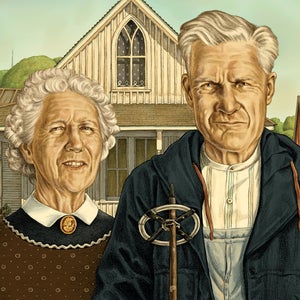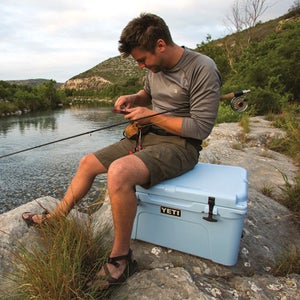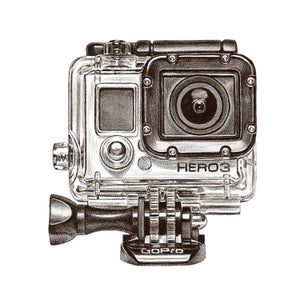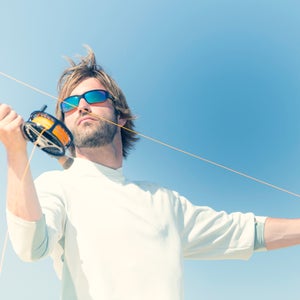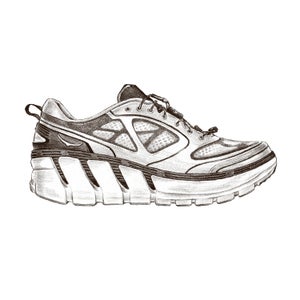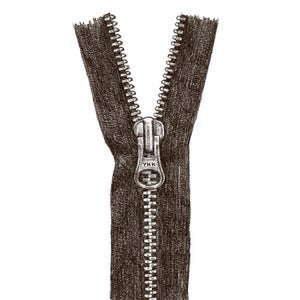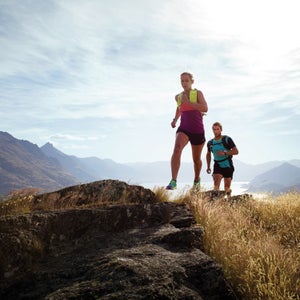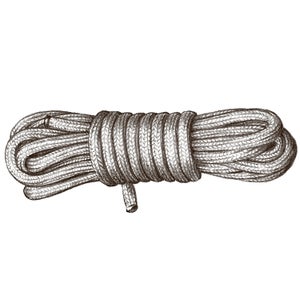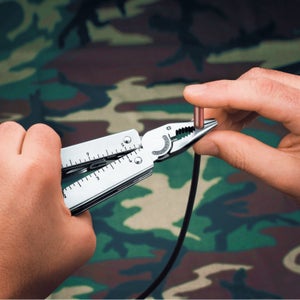Gear
ArchiveCarabiner: A gated aluminum fastener used with rope and other equipment to arrest rock climbers’ falls.
What do world-famous pilots like Jeb Corliss and Joby Ogwyn have in common? They all wear suits sewn by Tony Uragallo, a garden-loving designer who helps daring men zoom through the sky.
Base-Camp Duffel: A large, 155-liter bag often seen loaded on yaks in Nepal’s Khumbu region for a few simple reasons: it can take a beating, it has straps that convert it into a backpack, and mountaineers know that it can carry all their gear.
Chamois: A diaper-like pad first used by cyclists around 1900 to prevent saddle sores and chafing on their nethers.
Gone are the days of rangers in fire lookout towers. Now, mountain-top cameras are being used to spot smoke and flames.
Surfboard Fin: A structural element, usually made of wood or fiberglass, attached to the bottom of a surfboard to aid maneuverability.
The surprising tendency for technical products and trends from the outdoor world to find their way into mass culture.
Duluth pack: A heavy canvas rucksack, patented in 1882 by French Canadian Camille Poirier in Duluth, Minnesota, along the shores of Lake Superior.
Fly rod: A skinny stick, usually 6 to 13 feet long, used in conjunction with a reel, a line, and hand-tied simulations of in-sects to catch fish.
Dutch Oven: A large cast-iron pot and the campfire cooking vessel of choice for pioneers, cowboys, and river guides.
Repurposing: Taking a product and adapting it for a different use.
Jeremy Jones: A pioneering big-mountain snowboarder and snowboard designer.
Vasque Sundowner: A svelte hiking boot that serves as a testament to how well-made products can endure despite evolving design trends.
A rapid sequence of radical innovations, such as appeared in cycling between 1984 and 1987, the sport’s Age of Enlightenment.
Wetsuit: An insulating garment that allows individuals to spend more time in cold water.
Little Things: Those items that mark the difference between a miserable experience and a joyous one—pit zips on jackets being a prime example.
Catalog: A magazine-like print presentation of a company’s or retailer’s products.
A category of gear that came into being in the late 1960s as more and more skiers ventured beyond resort boundaries.
The world's leading design center for outdoor footwear—everything from featherweight climbing shoes to hard-shelled mountaineering stompers—is a small city in northern Italy where craftsmanship reigns.
Gary Fisher: A major figure in the development of mountain bikes.
A sturdy, purpose-made fishing boot that has become the gold standard of footwear in the 49th state.
Kite: A lightweight aircraft—often erroneously considered a toy—propelled by the wind and controlled by a user on the ground via a line or set of lines.
Blimp-tired bicycles were developed for one of the most grueling endurance races in the world. But then everyone else realized how much fun they were.
Washing a single polyester jacket can send 1,900 tiny synthetic micro-fibers into waterways, where they can soak up toxins and get eaten by fish. So what is the outdoor industry doing about it?
How a humble wooden fishing craft became the quintessential Grand Canyon ride
Therm-a-Rest: The first mass-market inflatable sleeping pad.
Westfalia: A breed of Volkswagen camper van prone to expensive repairs, yet beloved by those who own them and coveted by road-trip dreamers everywhere.
Fat Skis: Skis that are at least 115 millimeters underfoot.
The Perfect Size Wheel: An elusive and controversial hoop that allows mountain bikers the ability to optimize progress over rocky terrain.
And how it's going to change the way you see all of your stuff
Jogging Stroller: A stroller that allows parents to run and, theoretically, get their toddlers to nap.
Headphones: Any device used for playing music close to or within a wearer’s ears.
Hummer: The civilian version of the military’s Humvee off-road vehicle, which was produced by AM General from 1992 to 2006.
Telescoping front forks and articulating rear frame triangles that absorb bumps and shocks.
Blake Mycoskie: A 38-year-old philanthropist and entrepreneur who founded Toms Shoes (originally Shoes for a Better Tomorrow) in 2006.
Lumbersexual: A fashion-conscious male urbanite whose clothing and accessories project an aura of rugged manliness.
Thule: A company founded by Swedish outdoorsman Erik Thulin, originally to make fishing gear.
Jeep: A four-wheel-drive vehicle first produced for the U.S. Army during World War II.
Nalgene bottle: A durable, wide-mouthed vessel originally designed to hold chemicals.
Doug Tompkins: Businessman and crusading conservationist who cofounded the North Face and Esprit.
Heart-Rate Monitor: A device that measures a wearer’s heart rate; particularly useful for monitoring exertion in athletes.
Double Vacuum: A technology dating back to 1892 that suspends one container inside another, leaving a small amount of air between the two to insulate the inner contents from external temperature changes.
Lifetime Warranty: A company’s promise to repair or replace an item that breaks.
USGS Topographical Map: A detailed representation of a landscape, created by the United States Geological Survey, and a rare example of something every bit as beautiful as it is useful.
Caves, tepees, wall tents, those green canvas triangles that caused hypothermia in so many Boy Scouts—in one form or another, ideas borrowed from these flawed shelters appear in their modern descendents.
Elk Skin Gloves: Hand protection made from the skin of the great wapiti.
Velcro: A two-piece fastening material that features hooks on one side and a swath of loops on the other.
Backcountry.com: Online retailer of a wide range of outdoor gear.
Helmet: An apparatus designed to protect the wearer against head injuries.
Puffy: A lightweight jacket insulated with duck or goose down or synthetic fill.
Jack O’Neill: A former commercial fisherman widely credited with inventing the neoprene wetsuit.
These innovators-in-chief changed the way we play
Leatherman: A multitool invented by Tim Leatherman after wishing he had a pair of pliers while working on a rust-bucket Fiat with a pocket knife during a 1975 European road trip.
Lululemon: A yoga-apparel brand founded by Canadian entrepreneur Chip Wilson in 1998.
Garmin Forerunner 201: The world’s first all-in-one GPS-enabled running watch, released in 2003 by Kansas navigation company Garmin.
The original American road-trip trailer, designed in 1931 by Wally Byam, was inspired by Charles Lindbergh’s Spirit of St. Louis.
The most valuable currency in gear marketing of the past 40 years.
Pulaski: A wildland-firefighting tool that combines an ax and an adze and is used to clear brush and small trees.
Waffle: A repeating inverted cube shape adopted by sporting-goods manufacturers, beginning with Nike, which used the pattern on the sole of its iconic waffle trainer.
Founders of the Recreational Equipment Co-op (REI), which the couple started in their West Seattle home in 1938 as a way to help climber friends gain access to cheaper ice axes and harnesses by ordering bulk gear from Europe.
A cooler company whose two-inch-thick, double-walled products are so effective that its creation, in 2006, began a new era in rafting.
Sick Footie: A visual recording worth replaying for others.
Polarization: A lens technology that cuts glare created when light reflects off materials like plastic and glass.
Portaledge: A collapsible sleeping platform for climbers.
Fat shoes: Shoes with roughly 20 millimeters of foam underfoot
The brand of zipper that is likely keeping your britches up at this very moment. Headquartered in Tokyo, 81-year-old YKK (short for Yoshida Kogyo Kabushikikaisha, which translates as Yoshida Company Limited) was founded by Tadao Yoshida, who started making custom zippers to take advantage of breaks and…
Odor Control: The relentless attempt by apparel makers to tame human stink.
P-cord: Parachute cord, also known as paracord, the world’s most versatile survival tool.
Recall: A request by a manufacturer, and usually the U.S. Consumer Product Safety Commission (CPSC), to return a product after the discovery of safety issues.
Swiss Army Knife: The world’s first consumer multitool, designed by cutler Karl Elsener with two blades, a screwdriver, and a can opener.





